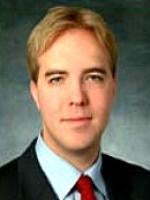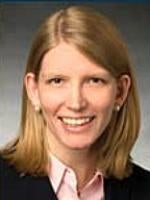On August 19, 2024, the Internal Revenue Service (IRS) issued Notice 2024-63 (the Notice), providing guidance regarding the implementation of Section 110 of the SECURE 2.0 Act of 2022 (SECURE 2.0), which permits employers with a 401(k) plan or 403(b) plan to provide matching contributions to employees based on employee student loan payments. Through various questions and answers, the Notice provides practical information on how to administer eligibility rules, employee certification, nondiscrimination testing, and other procedures.
In Depth
KEY TAKEAWAYS FROM NOTICE 2024-63
Eligibility for Student Loan Matching Contributions: The Notice begins by defining what a qualified student loan payment (QSLP) is and clarifying who can make a QLSP.
A QSLP is a payment made by an employee during a plan year in repayment of a qualified education loan incurred by the employee to pay for qualified higher education expenses of the employee, the employee’s spouse, or the employee’s dependent. For a student loan to be considered incurred by the employee, the employee must have a legal obligation to make payments under the terms of the loan. Notably, the Notice distinguishes between a co-signer who has such an obligation (eligible) and a guarantor who would only have an obligation if the primary borrower defaults (ineligible).
The Notice also explains that QSLP matching contributions cannot be limited to loans for a particular degree program (e.g., Bachelor of Arts) or attendance at a particular school. As for employee eligibility, all employees eligible to receive “regular” matching contributions based on elective deferrals under a plan must be eligible to receive QSLP matching contributions. Likewise, all employees eligible to receive QSLP matching contributions must also be eligible to receive regular matching contributions based on elective deferrals. However, an employer may exclude collectively bargained employees from QSLP matching contributions.
Limits: The Notice clarifies the qualified plan limits that apply to QSLP matching contribution amounts. An employee’s loan payments can only be QSLPs to the extent that such aggregated payments for a year do not exceed the Section 402(g) limit of the Internal Revenue Code (the Code) ($23,000 in 2024) minus the amount of the employee’s elective deferrals for the year (or, if lesser, the employee’s compensation under the Section 415(c)(3) limit of the Code, reduced by the employee’s elective deferrals for the year). The Notice also clarifies that only QSLPs made during a plan year are eligible for purposes of determining the amount of a QSLP matching contribution.
Employee Certification: The Notice offers plan administrators flexibility to attain employee certification. Plan administrators must obtain certification of specific information regarding a QSLP, including (1) the amount of the loan payment; (2) the date(s) of the loan payment; (3) confirmation the payment(s) was made by the employee; (4) confirmation the loan is for a qualified educational loan for the employee, the employee’s spouse, or the employee’s dependent; and (5) that the loan was incurred by the employee (meaning that not only did the employee make the payment, but he or she also had an obligation to do so).
The certification requirement can be satisfied in various ways, including through either affirmative certification by the employee or, for items (1) through (3) above, “passive” certification. (The affirmative employee certification requirement always applies to items (4) and (5).) For example, an employer may require employees to register the qualified loan with a third-party service provider. Registration with a third-party service provider would affirmatively satisfy verification of items (4) and (5). The third-party service provider would receive information about items (1) and (2). The employer may then notify the employee of this information received from the third-party service provider, along with a statement that the employer is assuming item (3) is also satisfied. If the employee does not correct the information within a reasonable time period, then items (1) through (3) are “passively” certified. Items (1) through (3) must be certified annually, though the employer has until to 2.5 months after the end of the plan year to do so. Items (4) and (5) need only be certified once for each loan. Employees do not need to submit additional documentation to support certification that the qualified loan payment meets the requirements of an QSLP.
QSLP Match Procedures: The Notice gives employers permission to establish reasonable procedures to implement the QSLP matching contribution. A plan may provide for QSLP matching contributions at a different frequency than its elective deferral matching contributions. For example, if the employer’s plan makes elective deferral matching contributions on a per-pay-period basis, QSLP matching contributions can be done on an annual, quarterly, or rolling basis. A plan can establish a single claims deadline or multiple claims deadlines for the QSLP matching contribution for a year as long as the deadlines are reasonable.
Corrections: If a plan administrator later learns that an employee’s certification of a QSLP was incorrect, a matching contribution based on that incorrect certification does not need to be corrected (although correction is permissible if all QSLP matches made under similar incorrect circumstances are corrected). However, to the extent a plan has an operational failure in administering the QSLP match, the IRS expects that the operational failure would be corrected.
ADP Testing/Safe Harbor Plan Options: A plan with a QSLP matching contribution can choose to test all employees together or separately test employees who receive a QSLP matching contribution for actual deferral percentage (ADP) testing purposes. With respect to safe harbor plans, a QSLP matching contribution may be added as a mid-year change. However, the notice and election opportunity requirements for mid-year changes to safe harbor plans still apply. An updated safe harbor notice that describes the mid-year change (e.g., implementation of a QSLP matching contribution) must be sent to employees 30 to 90 days before the effective date of the change. Each employee must also be given a reasonable opportunity (e.g., a 30-day election period) before the effective date to change their deferral elections.
NEXT STEPS
The Notice applies for plan years beginning after December 31, 2024, and is subject to comment for a period of 60 days. The IRS indicated that it will eventually issue proposed regulations with further guidance on Section 110 of SECURE 2.0. Until then, employers can rely on the Notice. For periods prior to the Notice effective date, employers can rely on their good faith interpretation.





 />i
/>i
